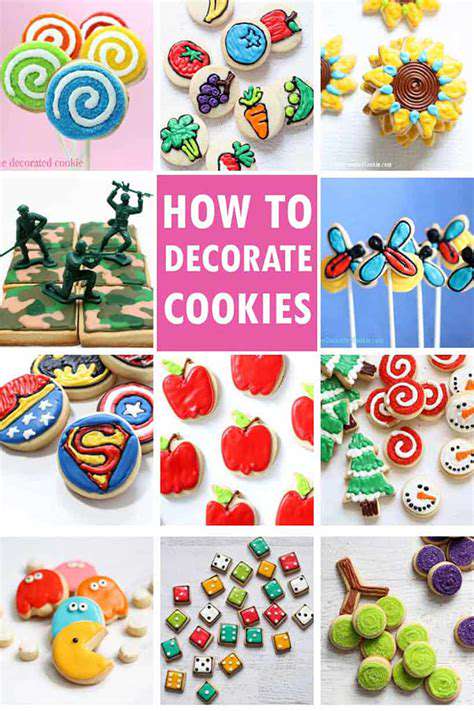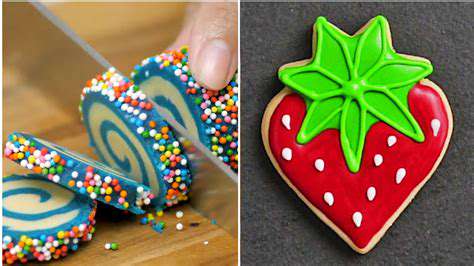Baking with Kids: Fun & Simple Cookie Decorating
Working with kids in the kitchen means paying extra attention to safety. Choose recipes that don't require sharp knives or very hot surfaces. Having ingredients pre-measured helps prevent spills and keeps things moving smoothly. Always keep a close eye on children when they're working near the stove or oven.
Ingredient Selection and Prep
Stick to basic ingredients that are easy to find and handle. Things like flour, sugar, and chocolate chips work well. You might want to measure everything out beforehand and put each ingredient in its own small bowl. This mise en place approach makes the process go much smoother.
For example, having the flour and sugar already measured means kids can focus on mixing rather than measuring. This organization helps prevent mistakes and keeps the kitchen cleaner.
Measuring and Mixing Techniques
Teach kids how to measure properly - scooping flour and leveling it off with a knife. Show them how to mix ingredients just until combined. Overmixing can make cookies tough, so this is an important lesson to learn early.
Decorating and Presentation
The decorating part is often kids' favorite step! Provide colorful sprinkles, small candies, and simple icing options. Let them express their creativity by decorating cookies however they like. The results might not be perfect, but they'll be proud of their creations.
Baking Time and Temperature Management
Explain how oven temperature affects baking. Show kids how to check if cookies are done by looking for golden edges. This helps them understand that baking is both an art and a science.
Clean-up and Organization
Baking with kids will get messy, but you can minimize the chaos. Make cleaning up part of the fun by turning it into a game. Assign simple tasks like wiping counters or putting away ingredients. Teaching kids to clean as they go helps develop good kitchen habits.
Preparing the Workspace for a Mess-Free (ish) Experience
Preparing a Kid-Friendly Baking Station
Setting up a special baking area helps contain the inevitable mess. Clear a table or counter space and gather all your supplies before starting. Cover the work surface with wax paper or a washable tablecloth for easy cleanup.
Keep a trash bowl nearby for eggshells and other scraps. Having designated spots for everything makes the process more organized and less stressful.
Essential Baking Supplies Checklist
Before you begin, double-check that you have all necessary tools: measuring cups, mixing bowls, spoons, and any special equipment your recipe requires. Being prepared means you won't have to stop in the middle to search for missing items.
Safety First: Child-Proofing the Workspace
Move anything dangerous out of reach - sharp knives, heavy bowls, and cleaning supplies. Make sure electrical cords aren't dangling where little hands might grab them. Good lighting helps prevent accidents too.
Dealing with the Inevitable Messes
Accept that some mess is unavoidable when baking with kids. Keep paper towels and a damp cloth handy for quick cleanups. Remember that the mess is temporary, but the memories you're making will last.
Encouraging Cooperation and Cleanliness
Give kids age-appropriate jobs like stirring or decorating. When they help with cleanup too, they learn responsibility. Praise their efforts to build confidence and make the whole experience positive.
Minimizing Disruptions and Maintaining Focus
Turn off screens and other distractions to help kids concentrate. Keep the mood light but focused. Short baking sessions work best for young attention spans.
Basic Cookie Decorating Techniques for Beginners

Essential Tools for Success
You don't need fancy equipment to start decorating. A few basic cookie cutters, some disposable piping bags, and simple tips will get you started. Quality matters more than quantity when it comes to decorating tools.
Preparing Your Cookies for Icing
Always let cookies cool completely before decorating. Warm cookies will make icing melt and slide off. This simple step makes a huge difference in your final results.
Mastering Basic Icing Techniques
Start with simple techniques like outlining and flooding. Practice on parchment paper before moving to cookies. The more you practice, the better your control will become.
Creating Smooth Icing Surfaces
For smooth icing, work quickly and use a toothpick to pop any air bubbles. Let each layer dry completely before adding details. Patience here leads to professional-looking results.
Adding Decorative Details with Piping Bags
Start with basic shapes like dots and lines before attempting complex designs. Consistent pressure is key to even piping. If you make a mistake, you can often scrape it off and try again.
Embellishing Your Cookies with Sprinkles and Edible Decorations
Sprinkles add instant fun to any cookie. Apply them while icing is still wet so they stick. Edible glitter can make simple cookies look magical with minimal effort.
Storing and Displaying Your Finished Cookies
Store decorated cookies in single layers with parchment between them. Airtight containers keep them fresh longer. Display your best creations on a pretty plate to show them off.

Tips for Managing the Baking Process with Young Children
Safety First: Creating a Kid-Friendly Baking Zone
Set up a safe workspace before you begin. Keep dangerous items out of reach and use stable step stools if needed. Teach basic safety rules like not touching hot surfaces.
Engaging Young Bakers: Making Baking Fun and Educational
Let kids help with age-appropriate tasks. Even simple jobs like pouring ingredients make them feel involved. The process matters more than perfection when baking with children.
Building Patience and Persistence: Managing Expectations During the Process
Break the recipe into small steps to maintain interest. Use a timer for waiting periods. Celebrate each step completed rather than just focusing on the final product.